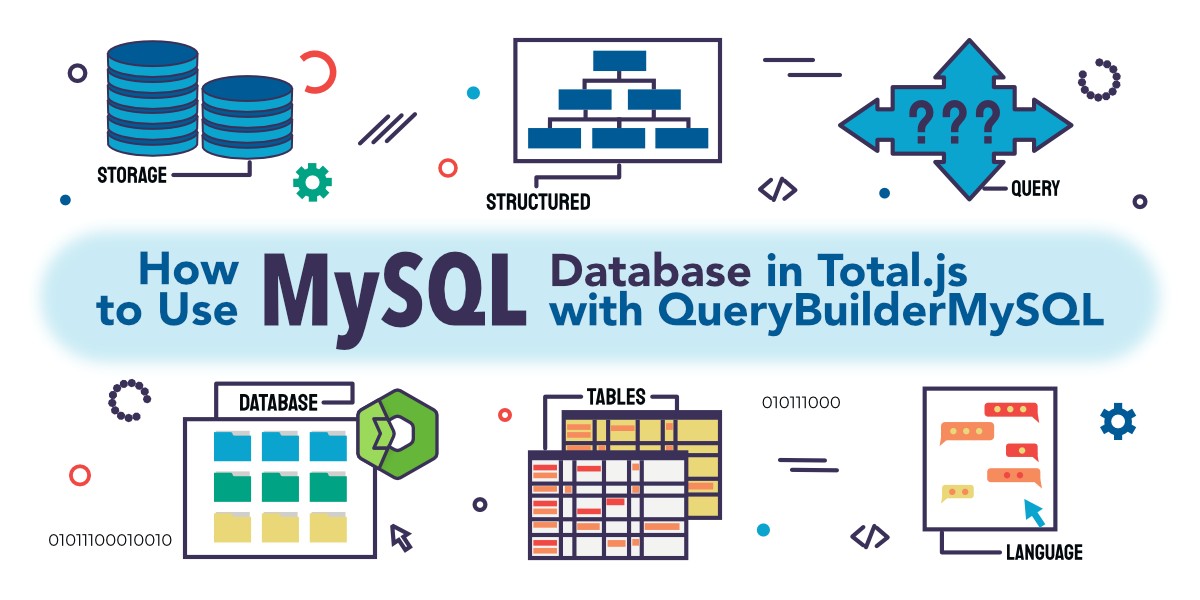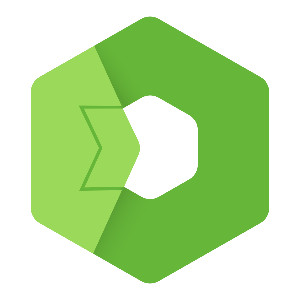The blog post provides a step-by-step guide on how to integrate MySQL database in Total.js using QueryBuilderMySQL. It covers the prerequisites, installation of QueryBuilderMySQL, setting up a Total.js application, configuring MySQL database connection, and creating a sample route to interact with the MySQL database. The tutorial emphasizes the convenience and efficiency of using Total.js and QueryBuilderMySQL for building robust web applications with MySQL database integration.

How to Use MySQL Database in Total.js with QueryBuilderMySQL
Total.js, a powerful web framework for Node.js, simplifies web application development. Integrating databases like MySQL is crucial for building dynamic applications. In this tutorial, we'll explore how to seamlessly combine MySQL with Total.js using QueryBuilderMySQL. This intuitive tool streamlines database interactions, making it ideal for both beginners and experienced developers.
Let's delve into the integration of MySQL with Total.js using QueryBuilderMySQL.
Table of Contents
- Prerequisites
- Creating a Total.js Application
- Setting up QueryBuilderMySQL
- Configuring MySQL Database Connection
- Using QueryBuilderMySQL in Total.js
1. Prerequisites
Before you start integrating MySQL with Total.js using QueryBuilderMySQL, make sure you have the following prerequisites in place:
- Node.js: Ensure that Node.js is installed on your system. If you haven't installed it yet, you can download and install it from the official Node.js website.
- Total.js (version 4 or later): You can install Total.js locally in your project directory. To do this, create a new project folder and navigate into it using the terminal or command prompt. Then, run the following npm command inside your project directory to install Total.js locally:
npm install total4
- MySQL Database: Set up a MySQL database server and make sure it's running. If you haven't installed MySQL, you can download and install it from the official MySQL website.
Having Node.js, a local installation of Total.js version 4 or later, and a running MySQL database server in place ensures a smooth integration process. Now you're ready to proceed with setting up QueryBuilderMySQL in your Total.js application.
2. Creating a Total.js Application
3. Setting up QueryBuilderMySQL
QueryBuilder is a versatile tool that provides a simple ORM implementation for various database engines. It operates as an abstraction layer, allowing you to download existing implementations for QueryBuilder or create your own, depending on your specific requirements.
QueryBuilder in General
QueryBuilder encompasses two main implementations:
- Database Operations: This implementation focuses on performing general database operations.
- Query Operations for Filtering Data: This implementation enables you to filter and manipulate data using query operations.
QueryBuilder supports serialization into JSON format, making it a flexible and powerful tool for handling database interactions. Here are some existing implementations:
- NoSQL Embedded (TextDB) Driver: Included in the Total.js core.
- QueryBuilder for PostgreSQL
- QueryBuilder for MySQL
- QueryBuilder for SQLite
QueryBuilderMySQL is a specific implementation designed for MySQL databases. To set it up, install the QueryBuilderMySQL package using npm:
Initialization:
4. Configuring MySQL Database Connection
- Open Configuration File:
Edit /config and add your MySQL connection string.
- Usage in db.js:
In /definitions/db.js, use the connection string with QueryBuilderMySQL:
With QueryBuilderMySQL set up and initialized, you can seamlessly perform MySQL database operations within your Total.js application. This integration simplifies the process of querying and manipulating data, enhancing the efficiency and functionality of your web applications.
5. Using QueryBuilderMySQL in Total.js
Now that you have set up Total.js and configured your MySQL database connection, let's dive into using QueryBuilderMySQL for database operations in a Total.js application.
Creating a Total.js Schema
In Total.js, schemas are used to define the structure of your data models and specify actions related to those models. Below is an example of a Total.js schema (/schemas/users.js) that uses QueryBuilderMySQL:
In conclusion, integrating QueryBuilderMySQL into a Total.js application streamlines MySQL database operations. Key steps include creating a Total.js application, configuring the MySQL connection, setting up QueryBuilderMySQL, and utilizing its operations in a Total.js schema. This combination enhances efficiency and developer productivity, making Total.js a powerful choice for database-driven applications. Happy coding!
Other posts from Total.js Platform
- 2025-12-15Totally Merry Christmas and a Happy New Year 2026!
- 2025-12-01November report 2025
- 2025-11-02October report 2025
- 2025-10-22New universal drivers for IoT Platform
- 2025-10-13IoT Platform Update: New Features and Enhancements
- 2025-10-01September report 2025
- 2025-09-05How to create Google Gemini AI component in Total.js Flow
- 2025-09-01August report 2025
- 2025-08-25IoT platform — Total.js
- 2025-08-22How to install OpenPlatform — IoT platform

